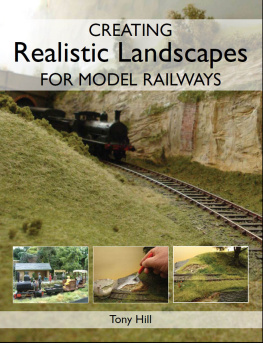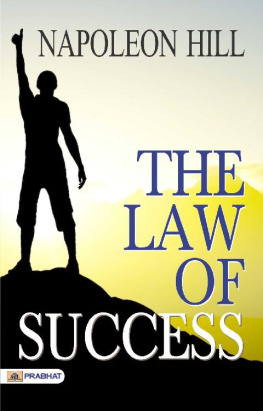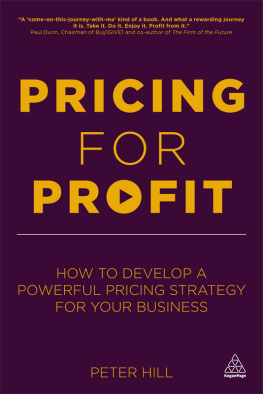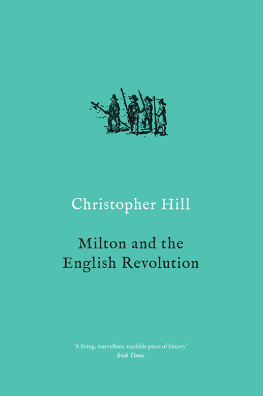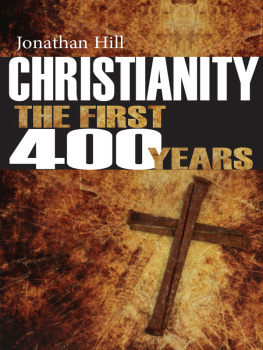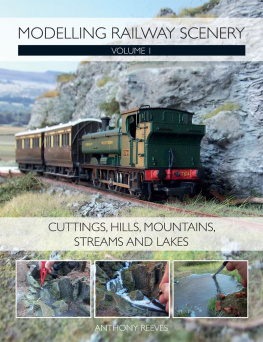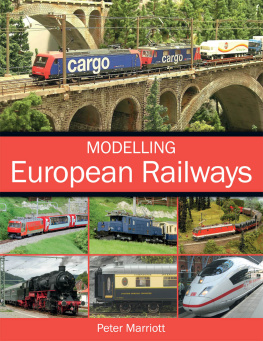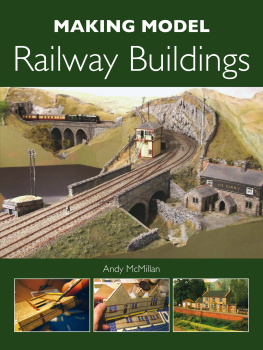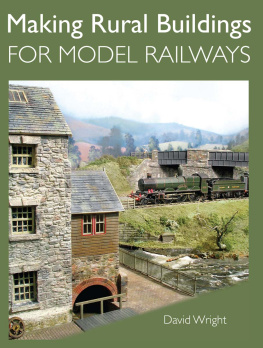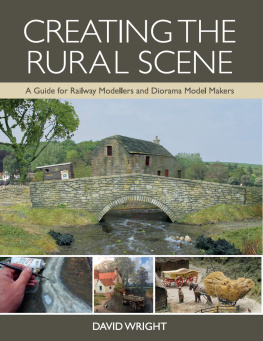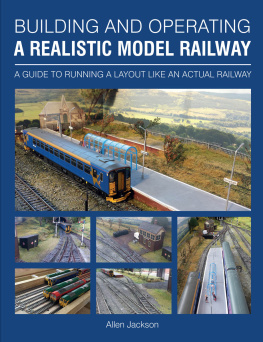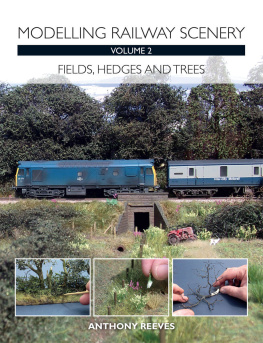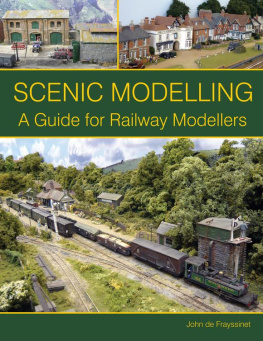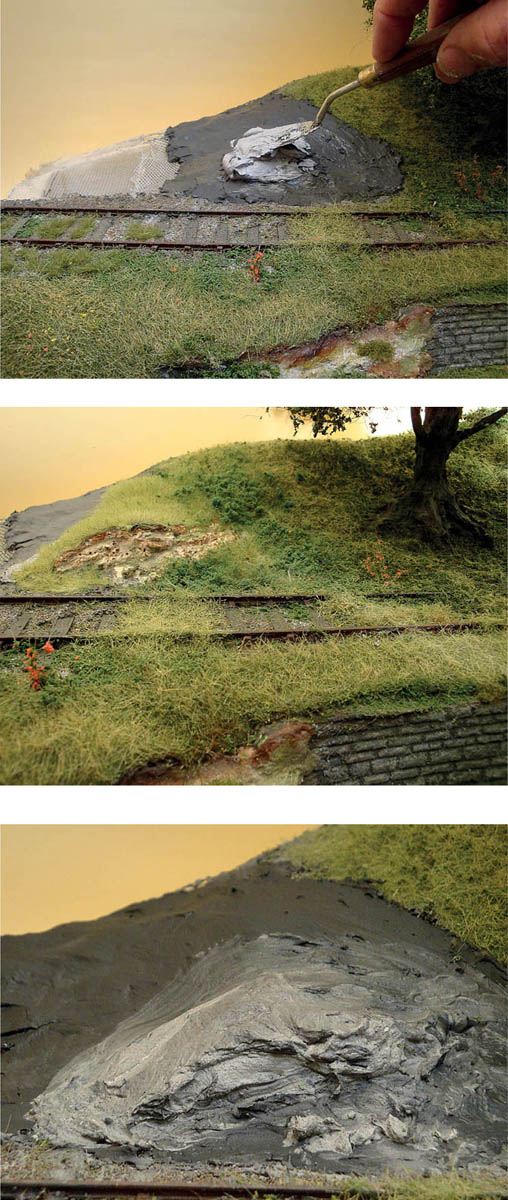
CREATING
Realistic Landscapes
FOR MODEL RAILWAYS
Tony Hill

THE CROWOOD PRESS
First published in 2010 by
The Crowood Press Ltd
Ramsbury, Marlborough
Wiltshire SN8 2HR
www.crowood.com
This e-book first published in 2014
This impression 2013
Tony Hill 2010
All rights reserved. No part of this publication may be reproduced or transmitted in any form or by any means, electronic or mechanical, including photocopy, recording, or any information storage and retrieval system, without permission in writing from the publishers.
British Library Cataloguing-in-Publication Data
A catalogue record for this book is available from the
British Library.
ISBN 978 1 84797 850 9
Disclaimer
Power tools, glues and other tools and equipment used to create model scenery are potentially dangerous and it is vitally important that they are used in strict accordance with the manufacturers instructions. The author and the publisher do not accept any responsibility in any manner whatsoever for any error or omission, or any loss, damage, injury, adverse outcome, or liability of any kind incurred as a result of the use of any of the information contained in this book, or reliance upon it.
DEDICATION
To Sue, my wife and friend who gives me support through all my highs and lows.
CONTENTS
PREFACE
My formative years were spent drawing, painting and creating things from my imagination with anything that came to hand. I was generally outdoors as much as possible in those halcyon days, playing with my pals up on the hills behind my home town and building tree-houses in the local woods; this played a big part in what I do now. Little did I realize that Mother Nature was quietly planting her own seeds into my subconscious, and that all that playing was to give me a love of the countryside, and trees in particular.
My working life took me into carpentry and joinery, and during this period I worked and made friends with a woodman on the estate where I was working. What he showed and taught me about the life of a woodland has stood me in good stead ever since.
Modelling railways was a natural progression for me as like so many of my contemporaries in those days I had lain on the floor with a train set and imagined being on that little train, making an imaginary journey. In due course I had a family of my own, and at about my sons third birthday I rekindled that love and built a train set for him. My enthusiasm didnt stop and I soon joined the local model railway club. At the club I was quickly drawn to a group who were building a Welsh narrow-gauge layout. The scenery was a very attractive part for me, and I honed and refined my skills on that little railway.
Trees in those days were made mostly from lichen and wooden sticks. I did not like the look of that very much, and started to make improvements, which eventually led to demonstrating at model railway shows. At those shows people began to ask if I would like to make them a tree and how could they make a landscape on their railway? After two or three magazine articles my first book was born, added to which my own landscape model-making business has blossomed. Travelling the land and realizing customers dreams for them is perhaps the greatest gift that could have been given to me outside my family life. When I look back I can now see where all that playing up in the woods and on the hills has led me.
The aim of this book is to enthuse you and hopefully lead you to enjoy Mother Nature whilst creating it in model form.
Happy modelling.
Tony Hill
INTRODUCTION
Over the last few years modellers have started to look for more realistic scenes in which to show off their prized models. Creating a realistic scene requires an ability to translate that which the eye sees into a model, with the added bonuses of patience and time. This book aims to enthuse and perhaps also give a wider view of our creative hobby.
Modelling is a very similar discipline to painting a picture, except that we are working in three dimensions rather than two. The following chapters deal with almost all aspects of a landscape that a modeller will come across, starting with the big picture and working down to the finest detail. It is of course up to the individual modeller how far that detail is to be taken.
There are many ways of creating a good model, but at the risk of repeating the obvious it all starts with observation. I will start with a general view of the world around us, as it appears in the UK; with this as a starting point, modellers in other parts of the world will be able to observe their respective landscapes appropriately.
Each chapter will start with a discussion of the materials and tools required. This will be by no means an exhaustive list, but more of a guide. Suppliers come and go, but I will list those that I am currently using at the end of this book. I have no affiliation to any, except as a happy customer.

A really classic view, this is Monsal Head in Derbyshire, which is very often held up to be the most picturesque and evocative railway line in England. Having walked the old line a couple of times, I marvel at the engineering skills and undaunted vision of the Victorian engineers and surveyors who could see a way through this fabulous landscape.
RESEARCH
It has always been important in creating realistic landscape models to have a good knowledge of the specific area that is to be replicated. Take a good look at your chosen subject and note the colour of the top-soil: this will normally give you a good indication of the underlying geology and how the land was cut by glacial movement, then by sea, rivers, rain and wind.
Chalk, for example, is formed by the compaction of millions of crustaceans under the sea. The sea retreats and leaves an undulating landscape that is fast covered by soil/sediment brought down by streams and rivers. Vegetation then starts to grow, and shrubs and trees start to colonize the areas. The sea starts to fight back and with the help of rain and wind erodes the chalk, creating areas such as the White Cliffs of Dover. Underneath the chalk in this area there is a seam of blue clay: this acts as a skid and, when the conditions are right, there is a cliff fall that exposes fresh white chalk, capped with a dark reddish brown soil.

Fresh chalk shows quite white after a fall, but it will soon become discoloured and turn a yellowish/green shade capped by light, then dark, brown soil covering. This is the real thing.

This is the model: it shows fresh chalk, with the older chalk discoloured.

I use a small pocket camera that just sits in the car and is popped into my pocket when walking. It will record the time and date, which is a useful aid to jogging ones memory when viewing the results.
Next page
